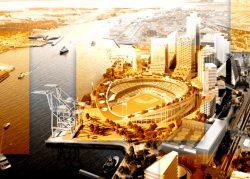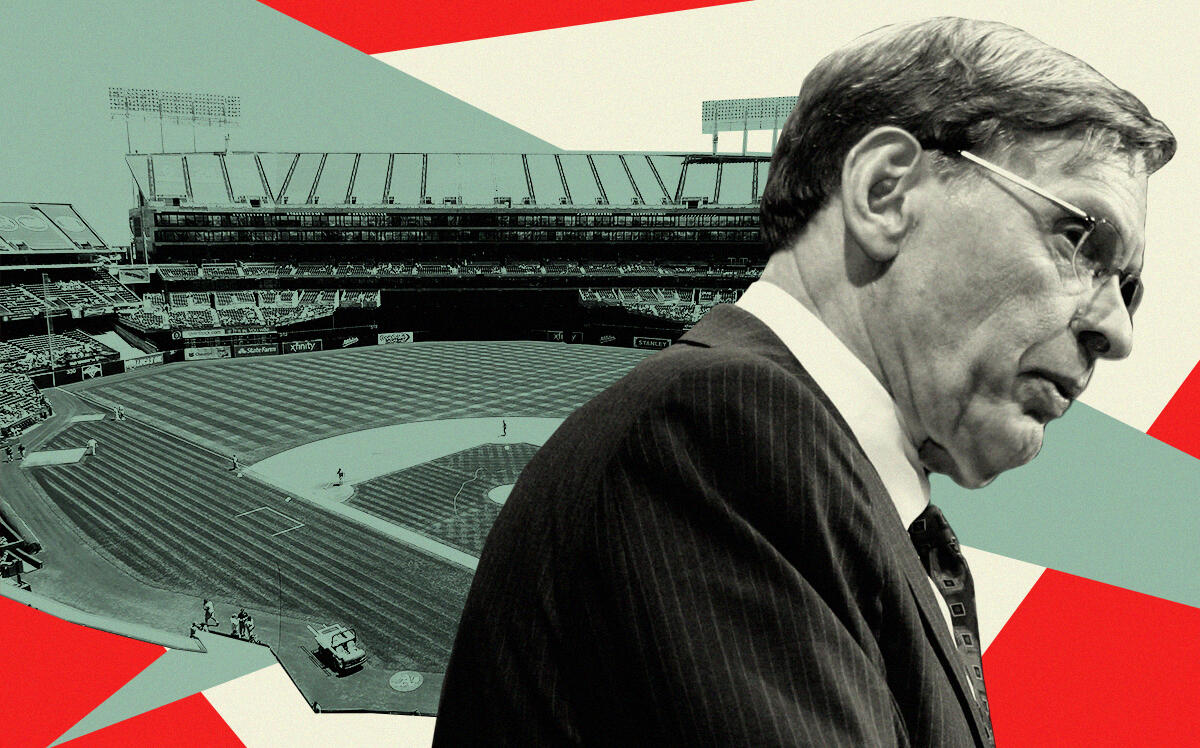How the once-mighty Oakland A’s have fallen.
The storied baseball franchise won three straight World Series titles in the 1970s with the likes of Reggie Jackson, Vida Blue and Jim “Catfish” Hunter, then returned to glory in 1989 with the notoriously juiced “Bash Brothers” — Jose Canseco and Mark McGwire.
Those years also brought financial success. The A’s boasted Major League Baseball’s second highest attendance in 1990, routinely outdrawing their Bay Area counterparts, the San Francisco Giants.
The decades that followed were met with ups and downs, but included 11 playoff runs under former general manager Billy Beane, whose “Moneyball” strategy allowed the A’s to succeed on the field despite a shoestring budget. But from a business standpoint, the team hasn’t been a contender in years.
The A’s carry the second lowest payroll in the big leagues and have anemic attendance numbers, which ranks dead last this year. Of course, it doesn’t help that ownership’s efforts to lobby for a new stadium have encouraged fans to stay home.
Nevertheless, the organization is in a contentious battle to build a new stadium at the Howard Port Terminal. This, however, is not a sure-thing for Oakland’s last remaining professional sports team, which could follow the National Football League’s Raiders, its former co-tenant in the RingCentral Coliseum, to Las Vegas. The new stadium has been met with resistance from labor unions, members of the city government and a number of Oakland residents.
In theory, the A’s could be better off in San Jose, a move the organization pitched in 2012 as a way to raise income and payroll and reduce reliance on the league’s revenue-sharing program, which it relies on to stay afloat.
It is a nice idea, except the Giants insist that San Jose is their territory, a fact included in the MLB’s 1990 constitution. In the 1980s, when the Giants were looking for a new ballpark, the A’s offered territorial rights as a benevolent gesture to help the Giants draw up public votes to support a South Bay ballpark.
The project never came to fruition, but the territorial rights remained. In 1992, Giants owner Bob Lurie agreed in principle to sell his team to a group of Tampa Bay investors led by Vince Naimoli. However, he ended up selling to supermarket magnate Peter Magowan after league owners rejected the sale over Naimoli’s plans to move the team to Florida. The territorial rights were included in the sale to Magowan.
For years, the A’s have attempted to negotiate with the Giants to relinquish their territorial rights, but have had no success. In the early 2000s, team co-owner and local developer Steve Schott repeatedly tried to get MLB Commissioner Bud Selig to force the Giants to drop the rights. But Selig maintained that territorial rights are important to a franchise and he wouldn’t budge.
“I’m sympathetic to Steve and Ken, and I’ve talked to them about their problems, but baseball needs its internal rules,” Selig said at the time.
By 2009, the team was owned by real estate developer Lewis Wolffe, who attempted to build a $500 million stadium in San Jose near the Diridon train station. Selig put together a commission to determine if the A’s had the right to proceed with the plans. He ultimately decided to honor the Giants’ territorial claim.
This precedent could pose yet another problem for the proposed Howard Terminal stadium and is a pivotal make or break moment for the team. If the plan doesn’t come to fruition, the likely outcome would be the A’s relocating to Las Vegas.
The Howard Terminal project would be one of the largest developments in California history, centered on a ballpark that would seat 35,000 fans. However, the organization, acting as the project’s developer, has promised to create a mixed-use neighborhood around the stadium.
The proposal includes 3,000 residential units, 1.5 million square feet of office space, 270,000 square feet of mixed retail, cultural and civic functions, a 3,500-seat performance theater, a 400-room hotel and 18 acres of public open space. The project will also include a certain percentage of affordable housing.
The exact amount of affordable housing has been one of the largest disputes between the city and team. Oakland wants the project to have a minimum of 15 percent, while the team stated they would like to keep it around 5 percent.
There have been some positive indicators that the development will move forward. Specifically, the city council rejected a ballot measure for November’s election that would have required voters to approve public funds for the project. Further, The San Francisco Bay Conservation and Development Commission approved removing Howard Terminal from the port, which opens it up for development.
Read more





